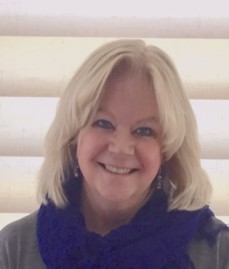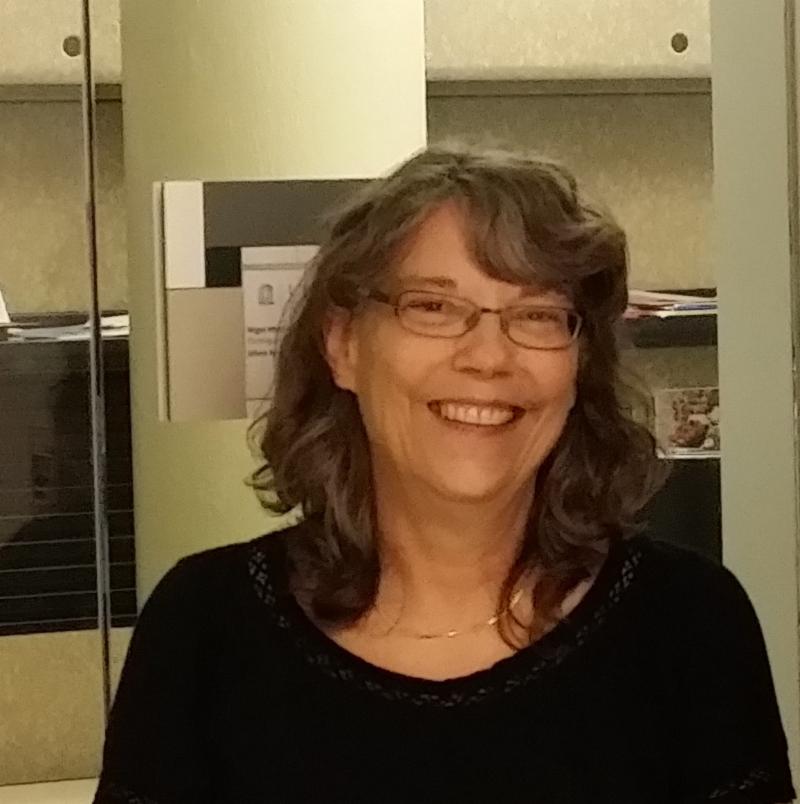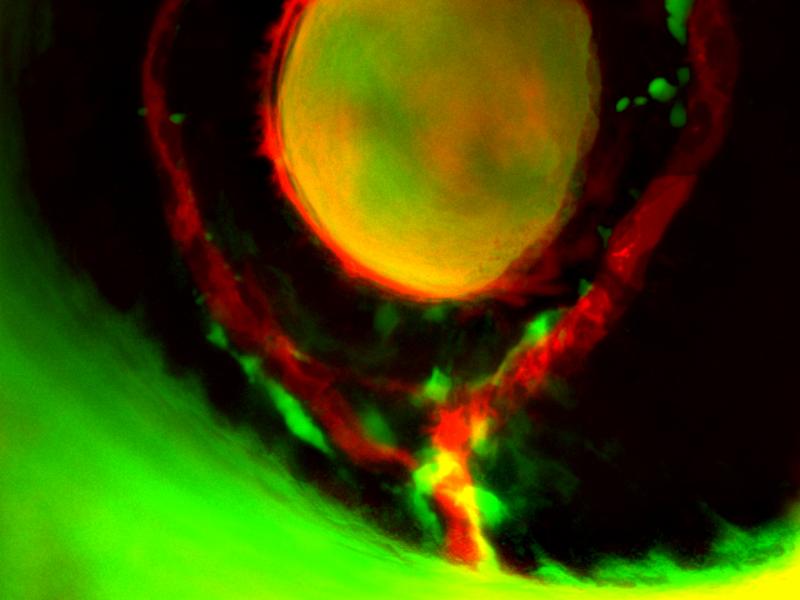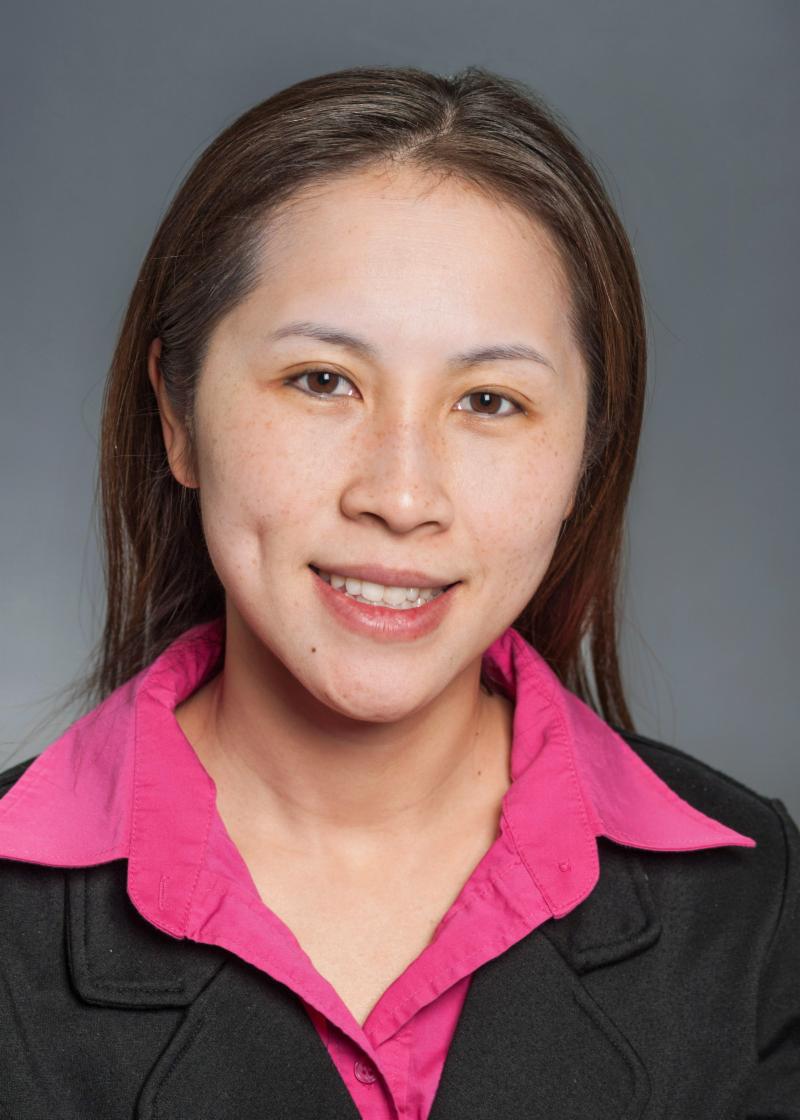Vascular Biology
Monterey, CA
Vasculata 2019
Medical College of Wisconsin
July 13 - 18, 2019
|
|
Partner Network Advantage - New Job Board Feature
|

Why post your job on NAVBO's career center rather than going directly to the larger job networks?
Pricing on the mass job boards can vary, but to get a job noticed you typically have to sponsor it for $5 - $10 per day, which can add up quickly especially since you also pay for each click the job gets. When you add it all together, you could be spending up to $45 per day on your job posting. But, when posting a job on NAVBO's career center, you simply pay a flat fee! The Premium package includes our Exclusive Extended Partner Network - which means the jobs are broadcast to sites like ZipRecruiter and Jobs2Careers and more for a flat fee.
With special member pricing, you can post a job for as low as $300 with this Partner Network. You never pay for each click, just the flat fee on the NAVBO career center. In addition, the Premium package includes a 60-day job posting making it a great value. The Premium packages also offer features like having your company's logo featured on the career center homepage, having your job appear first in search results, and more.
|
Shop at Amazon?
Help Support NAVBO
|
Your data privacy and security are important to NAVBO. To that end, we have updated our privacy policy to reflect recent privacy and security regulation implementations and changes.
Please review our policy as time permits so you have a complete understanding of the data we have, why we have it, and how we use it.
Part of the updates relate directly to the European Union's new General Data Protection Regulation (GDPR) that went into place May 25. The GDPR seeks to improve the transparency of data usage and give end users more control over their own data. We believe these changes are important and will be compliant with the GDPR regulations.
Contact NAVBO if you have any questions or to
change your communication preferences.
Please note, you can unsubscribe to this newsletter at anytime by clicking on the SafeUnsubscribe in the footer.
|
|
 |
|
|
Meet One of Our New Council Members
|

Linda H. Shapiro, Ph.D.
Dr. Shapiro is a Professor and Director of the Center for Vascular Biology at the U Conn School of Medicine. She received her B.S. in Microbiology from the University of Notre Dame and her MS and PhD at the University of Michigan, Department of Microbiology and Immunology, focusing on the immunogenetics of macrophage antigen presentation.
She performed her postdoctoral research at the NIH in the Laboratory of Immunology with Dr. David Margulies and later the University of Michigan with Dr. Richard Tashian. Her initial faculty appointment was at St. Jude Children's Research Hospital where she was a member of a group that cloned the transmembrane peptidase CD13/aminopeptidase N. She subsequently moved to UConn where she has continued to focus on understanding the regulation and function of the CD13 protein, the identification of its regulatory substrates and activating ligands and its various roles in vascular physiology, inflammation, cardiovascular disease and cancer in various tissues. This work has revealed CD13 as a surprisingly multifunctional molecule that often works independently of its enzymatic activity to regulate diverse processes such as angiogenesis, inflammatory trafficking, antigen presentation, endosomal trafficking, cell-matrix adhesion, cell-cell adhesion, virus infection and maintenance of the stem cell niche.
|
|
Today's Webinar Features Vicki Bautch
|
 How Blood Vessels Control Their Own Destiny How Blood Vessels Control Their Own Destiny
Please join us on July 11 at 1:00pm EDT for a webinar featuring Dr. Vicki Bautch of North Carolina University at Chapel Hill.
Here is an overview of her presentation: Blood vessel formation requires the precise spatial and temporal regulation of interactions between gradient-forming, pro-angiogenic signals (e.g., VEGF-A and BMP) and endothelial cells in developing organs. These pro-angiogenic pathways may be modulated by negative regulators that originate in target endothelial cells, including the VEGF-A decoy soluble Flt1/VEGFR1 and SMAD6, which binds BMP receptors and blunts BMP signaling. Genetic deletion of either Flt1 or SMAD6 is associated with defective vessel architecture and integrity and is lethal during embryonic or early post-natal stages, highlighting the importance of negative regulators of VEGF-A and BMP signaling for normal vessel formation and stabilization.
NAVBO Webinars are free to current NAVBO Members.
August 1 - Masanori Aikawa, Brigham & Women's Hospital
September 12 - Carlos Fernández-Hernando, Yale School of Medicine
October 10 - Sathish Srinivasan, Oklahoma Medical Research Foundation
And don't forget you can watch archived webinars as well - go to
|
|
Live Stream Vasculata 2019 to Your Institution
|

Vasculata 2019 - July 15-18
Medical College of Wisconsin
If you can't make it to Milwaukee, bring Vasculata to your institution!
Live stream Vasculata to your institution and interact with the speakers in the Q&A sessions and have access to the mobile app, which will contain supporting materials for lectures. You can even have your own poster session!
Your group will have access to the keynote talks by
Luisa Iruela-Arispe and
Registration is still open.
|
|
NEW!!! VB2019 Grants for Child Care
|
NAVBO announces grants to support child care expenses
Help support these grants by purchasing a Vascular Biology networking T-shirt or by giving a donation. NAVBO will support five grants at $400 each; all funds raised in this manner, even if above $2,000, will support these grants. Thank you for your support.
|
Ngan Huang

My name is Ngan F. Huang, PhD and I have been an Assistant Professor in the Department of Cardiothoracic Surgery at Stanford University since 2013. Many people consider the milestones of a successful Assistant Professor to include: publishing high impact papers, receiving grants, getting top teaching evaluations, serving on grant review panels, becoming nationally recognized by peers, obtaining leadership positions in service organizations, becoming journal editors, and receiving achievement awards. However, these milestones can be challenging and even overwhelming. I remember feeling lost as a brand new faculty member, not knowing how I would eventually be able to reach these milestones towards securing tenure. Now, six years later, I would like to share some of the progressive steps I took towards reaching these milestones.
Years 1 & 2: Setting up the laboratory and developing thick skin for rejection.
I consider the first two years as being simultaneously the easiest as well as most challenging years of being an Assistant Professor. The reason for being the easiest is because new faculty would already know that the initial tasks are to establish your laboratory, purchase any necessary equipment that cannot be borrowed, hire your first trainees, and start teaching. Although the process of doing these tasks can be daunting, at least every new faculty already knows these initial responsibilities. On the other hand, the most challenging aspect of the first two years is in getting that first grant without leaning on the shoulders of your former mentor. Writing a fundable grant requires first and foremost good ideas, and getting that first grant is to affirm your ability to develop novel ideas and to build self-confidence. Therefore, the first two years are like a testing ground to get feedback from reviewers about your ideas. Some ideas might be met with enthusiasm, and other ideas will be harshly criticized. This seemingly endless cycle of writing grants and then learning of the funding outcome is like a filtration process-separating the non-fundable ideas from those that stand a chance. Although these rejections can provide some constructive feedback on potential improvements to your ideas, it may feel very disappointing at times. In times of receiving rejection, my advice for new faculty is to persevere and not give up. When facing rejection, take a break to seek support from colleagues who have gone through the same experience. At a later point, revisit the reviewer comments to identify ways to improve the quality of the proposal, or possibly to approach the same question from a different angle. As an example, I once took the well-received elements of a non-funded R01 grant and submitted it as a R21 grant, which was later funded. Also consider alternative funding agencies that might be more receptive to your ideas. Being able to grow from writing non-funded grants is a necessary aspect of academia. Keep writing and refining your ideas. Do not be afraid of rejection, as your skin will adapt with time by thickening.
Years 3 & 4: Becoming visible in your field and getting that elusive major grant.
Most new faculty members already have training in writing manuscripts and grants, but many people have never learned about becoming visible in the research community. I used to think that publishing high impact papers was the only way to get invited as a speaker at conferences or to become an editor of a journal. I realized a few years into my faculty position that taking an active role to becoming visible in the field is more effective and more fun. Whereas in the first two years I was predominantly focused on attending research conferences, by the third year I began to actively organize conference sessions, volunteer for service committees, and distribute my CV to program officers for consideration as a grant reviewer. Becoming actively involved in societies or service organizations is helpful towards becoming recognized for both research and service in the research community. In the process of organizing conference sessions, you will meet other colleagues, some of whom may one day be a reviewer on your manuscripts or grants. Social media is also emerging as a highly effective way to meet colleagues and publicize your latest research findings.
By now you have already have gained ample experience in writing grants and perhaps have successfully received some small grants. However, getting that first major grant, such as an R01 grant, is another stepping stone for junior faculty. Some senior faculty suggest waiting a few years until you have a strong proposal with plenty of preliminary data, while others suggest submitting early on to test the waters of how well the idea will be received. I know of colleagues who waited until their third or fourth year to submit their first R01 grant application, only to find out that reviewers were not enthusiastic about their idea, leading them to start over in another research direction in their fourth year. Personally, I found the latter advice more helpful. I submitted three R01 in the first three years, and then focused my efforts in resubmitting the R01 grant with the best chance of funding. Besides having a good idea and supportive preliminary data, a fundable R01 requires clear grantsmanship and a strong team of collaborators. For this reason, carefully planning and timing are needed to craft a well-written and well-designed proposal. Enlisting the support of colleagues to critique your proposal is an excellent way to gauge the response of reviewers.
Years 5 & 6: Reaching for high-impact papers and expert status.
Research productivity in the form of publications is an essential component of the tenure promotion process. However, it can be challenging to publish a high-impact publication, especially without knowing from the beginning whether the hypothesis will be proven true or not. In some fields of research, publishing in top tier journals may not even be relevant. However, most faculty members would like to have at least one high-impact factor publication as part of the tenure promotion process. My senior colleagues advise me that high-impact factor publications do not emerge accidentally, but are instead carefully crafted starting from a transformational idea. Since these projects may require extra financial resources, long periods of time, and unwavering dedication by the primary researcher, it may not be feasible for starting faculty to reach for this kind of publication initially. However, by the fifth or sixth year, faculty members who have the financial resources and time may be able to wager on a highly transformational idea for a chance in getting a high-impact factor publication.
By this time you probably have published a number of papers as the senior corresponding author and are becoming known by research peers and leaders in the field. Now is the time to congratulate yourself for becoming an expert in your field. Do not be shy to regard yourself as an expert-you earned it after all these years of hard work. If you have not yet, you can start nominating yourself for leadership positions in societies or as an invited seminar speaker at other institutions. If tenure is around the corner for you, continue to develop friendships with colleagues, including senior faculty who might one day review your tenure application.
See all of the Lessons Learned on our web site
|
|
|
Promote Your Presentation on the Web Site
|
Current NAVBO Members Can List Their Upcoming Presentations (Oral or Poster) on our Web Site
Keep members, and all who visit our web site, aware of presentations by NAVBO members. If you are attending the meeting, be sure to attend your NAVBO colleague's presentation. If you are also presenting at that meeting, you can attend each other's presentations and offer mutual support! It can also help make you aware when a colleague is in your town so you reach out and arrange an in-person chat. And finally, this listing can also keep you abreast of other relevant meetings and conferences.
There is a form at the bottom of the page for you to add your presentation.
|
|
Shop and Raise Money for NAVBO - Click on the image
|
Deadline looms for 2019 Science and SciLifeLab Prize for Young Scientists
Science/AAAS and SciLifeLab, a coordinated effort of four Swedish universities, have joined forces in creating the annual
Science & SciLifeLab Prize for Young Scientists. The sponsors seek to provide extra encouragement to young scientists (doctoral degree awarded within the previous two years)as they begin their independent scientific careers. The grand prize-winner will receive a prize of US$30,000; each of the three category winners will receive US$10,000. The grand prize-winning essay will be published in Science, and essays from the three category winners will be published online.
Application deadline is July 15, 2019.
|
|
Call for Papers - Single-Cell Anaylysis
|
A Frontiers Research Topic initiated by NAVBO
Recent advances in analyzing tissues and organs at the single cell (SC) level are revolutionizing our understanding of organ development, biology, and disease. Previously, the genetic composition or transcriptional profiles of cells was based on sequencing DNA or RNA from a large number of cells, but this approach loses information on the heterogeneity of individual cells. Sequencing DNA and RNA from individual cells preserves heterogeneity, and technological advances have made these techniques highly accessible.
A recent analysis - available
here - of the SC extramural research funded by the NIH, either through NIH-initiated programs focused on SC or initiated by extramural investigators, revealed the paucity of such analyses related to vascular cells compared to a variety of other cells and tissues. This Research Topic is seeking to galvanize interest in SC applications related to the field of vascular cell biology and highlight original research related to SC analyses of vascular related cells, under normal or diseased conditions. We seek to understand the specific challenges associated with studying vascular cells, and how advances in SC approaches could benefit vascular fields. Submissions are due September 30, 2019.
More information can be found here on the Frontiers web site.
|
Welcome to our New Members:
Zhen Chen, City of Hope
Jami Gurley, OUHSC
Chih-Hung Lai, City of Hope
Yingjun Luo, City of Hope
Mariam Murtadha, City of Hope
Pam Rios Coronado, Stanford University
Xiaofang Tang, City of Hope
|
|
Recent Publications by NAVBO Members
|
| High-Throughput Scaffold System for Studying the Effect of Local Geometry and Topology on the Development and Orientation of Sprouting Blood Vessels
Advanced Functional Materials
Live tissues require vascular networks for cell nourishing. Mimicking the complex structure of native vascular networks in vitro requires understanding the governing factors of early tubulogenesis. Read more RASA1-dependent cellular export of collagen IV controls blood and lymphatic vascular development
The Journal of Clinical Investigation
Combined germline and somatic second hit inactivating mutations of the RASA1 gene, which encodes a negative regulator of the Ras signaling pathway, cause blood and lymphatic vascular lesions in the human autosomal dominant vascular disorder capillary malformation-arteriovenous malformation (CM-AVM). Read more Consensus guidelines for the use and interpretation of angiogenesis assays
Angiogenesis
The formation of new blood vessels, or angiogenesis, is a complex process that plays important roles in growth and development, tissue and organ regeneration, as well as numerous pathological conditions. Read more Validation of a Miniaturized Permeability Assay Compatible with CRISPR-Mediated Genome-Wide Screen
bioRxiv
The impermeability of luminal endothelial cell monolayer is crucial for the normal function of the vascular and lymphatic systems. Its key is intercellular junction integrity. Read more Scalable microphysiological system to model three-dimensional blood vessels
APL Bioengineering
Blood vessel models are increasingly recognized to have value in understanding disease and drug discovery. However, continued improvements are required to more accurately reflect human vessel physiology. Read more Differentiation and Functional Comparison of Monocytes and Macrophages from hiPSCs with Peripheral Blood Derivatives
Stem Cell Reports
A renewable source of human monocytes and macrophages would be a valuable alternative to primary cells from peripheral blood (PB) in biomedical research. Read more Augmented pulmonary vasoconstrictor reactivity following chronic hypoxia requires Src kinase and EGFR signaling
American Journal of Respiratory Cell and Molecular Biology
RATIONALE: Chronic hypoxia augments pressure- and agonist-induced pulmonary vasoconstriction through myofilament calcium sensitization. Read more |
|
White House effort on drug price disclosures hits judicial snag
The US District Court in the District of Columbia ruled this week that the Trump administration cannot force pharmaceutical companies to disclose the list price of their drugs in television ads. The president has pressured drug companies to lower their prices, a populist issue for the administration and members of Congress. The effort to provide transparency in drug pricing is seen as largely symbolic; HHS Secretary Alex M. Azar II has argued that requiring such disclosure could shame the drugmakers into lowering their prices. Bipartisan legislation in Congress would limit out-of-pocket costs for people covered by Medicare and allow the federal government to directly negotiate the price of drugs.
Shifting funding priorities in stem cell research
Jocelyn Kaiser, writing in Science magazine, reports that the California Institute for Regenerative Medicine, created in 2004 with a $3 billion state research allocation, is no longer taking grant applications. The CIRM ballot initiative followed then-President George W. Bush's administration move to curtail the use of federal funding for studies of stem cells derived from human embryos. Although CIRM initially focused on human embryonic stem cells, projects came to encompass research on adult stem cells and induced pluripotent stem cells, created by reprogramming adult cells to an embryolike state.
Investigation of diet-related canine cardiomyopathy continues
In late June, the US Food and Drug Administration
issued an update on its investigation into reports of dilated cardiomyopathy in dogs consuming "grain-free" diets, containing a relatively high proportion of legume seeds and/or potatoes as main ingredients. Between January 1, 2014, and April 30, 2019, the FDA received 524 reports of DCM from pet owners and veterinarians. The mechanistic details of the association between diet and DCM remain unclear. Although some dog breeds have a genetic predisposition to DCM, the reports submitted to the FDA span a wide range of breeds, including many without a known genetic predisposition.
|
|
|